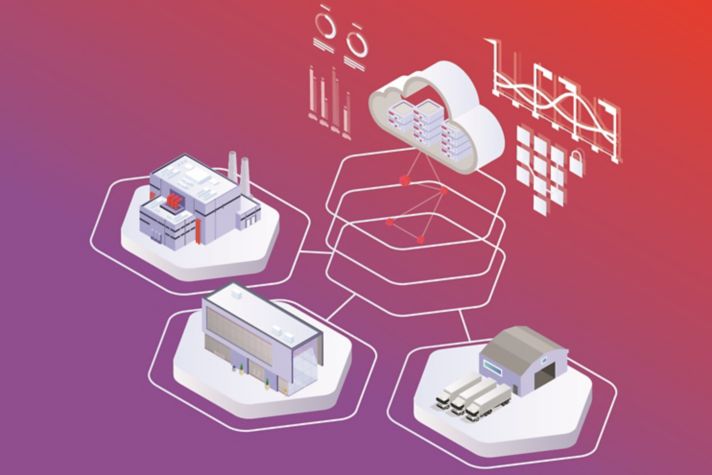Honeywell Forge Flight Efficiency Helps Airlines Trim Emissions
The airline industry accounts for about 2% - 3% of the world’s carbon emissions, according to the International Air Transport Association (IATA).1 While that may seem like a relatively small carbon footprint for such a large global industry, if aviation were a country, it would be the world’s sixth largest source of CO2 emissions.2
It is no wonder airlines have come together through organizations like IATA and The International Civil Aviation Organization (ICAO) to drive down air travel’s environmental impact on the planet. For example, IATA’s nearly 300 member airlines recently targeted net-zero emissions by 20503.
Breakthrough innovations from companies like Honeywell are already enabling enormous improvements in fuel efficiency, on-time performance and emission reduction – three key factors that will drive sustainability. For example, Honeywell is working on a variety of initiatives ranging from sustainable aviation fuel (SAF) to electric and hybrid-electric propulsion, which will help the aviation industry achieve its environmental commitments.
In addition, Honeywell has pledged to be carbon neutral in all of their facilities and operations by 2035. More impactfully, the company continues to develop and deploy innovative products, services and software solutions to help their customers in core sectors – such as, commercial aviation – achieve their own sustainability goals.
Airlines Look Forward to a More Sustainable Recovery
Airline executives have a lot on their plates these days as they resume regular operations in a post-pandemic world. Many airlines are seizing this opportunity to improve operational efficiency and reduce block time, fuel consumption and carbon emissions. Many have said that they are willing to invest in new technologies and software solutions, but only if those investments pay for themselves – and sooner rather than later.
Reducing block time and fuel consumption have a direct impact on the airlines’ bottom lines. Reducing carbon emissions is an outcome of doing those two things successfully, which pays dividends by potentially enabling regulatory compliance, building stakeholder goodwill and improving the quality of life on planet Earth.
As the always-volatile cost of jet fuel climbed about 70% last year, it put a severe dent in the typical airline’s profitability and caused many operators to double down on fuel-efficiency measures.
Fuel accounts for about 17% of an airline’s total costs, which is exceeded only by labor costs at 21%, according to IATA. No wonder 83% of airlines told Honeywell they consider fuel consumption a “major business challenge.”
At the same time, environmental performance – which in many ways relates directly to fuel consumption – has moved up on the airlines’ to-do list for several reasons. Regulations aimed at reducing emissions are getting tougher all the time and most government assistance packages for the airlines came with green strings attached. In addition, airlines are feeling pressure from stockholders, employees and passengers to live up to higher sustainability standards.
In fact, a recent Inmarsat survey found that 42% of passengers said sustainability is an increasingly important factor when it comes to choosing an airline. Of course, passengers also make their choices based on factors like cheap ticket prices, convenient schedules and on-time performance. Finding the right balance between these imperatives is a continuing struggle for air carriers.
Honeywell Forge Flight Efficiency Answers the Call
Honeywell Flight Efficiency is much more than a fuel-efficiency tool. It’s a multidimensional software platform capable of managing an airline’s enterprise-wide effort aimed at reducing emissions and fuel consumption while improving operational efficiency.
Honeywell Flight Efficiency takes the blinders off and gives the airline access to a single source of truth of real-time and historical data, so that they can make fact-based decisions impacting fuel consumption, flight efficiency, flight planning and other operational processes.
For example, the platform uses advanced data analytics to provide airlines with precise fuel-loading guidance. Honeywell Flight Efficiency lets pilots and dispatchers determine the right amount of fuel to load to safely complete their flight, including the required statistical contingency fuel. The software insights can help the airline determine how not to load excess fuel, which affects fuel efficiency – and thus greenhouse gas emissions – by increasing the aircraft’s weight.
With data accessible on an intuitive dashboard or native mobile application, Honeywell Flight Efficiency enables airlines and flight crews to make informed decisions before and during flight. This is designed to help balance the need for fuel savings and on-time performance, which are critical airline requirements. The software can inform pilots of the effect that choices, like increasing airspeed, have on fuel efficiency.
The Honeywell platform helps the airline operations department analyze fuel-burn data and identify best practices that can be shared throughout the enterprise. As pilots and operations teams become familiar with its capabilities, the software has the potential to drive behavioral and cultural changes while creating a corporate culture focused on enterprise-wide efficiency.
Honeywell Flight Efficiency allows operators to track the kinds of fuel they are loading to evaluate the environmental and financial impact of burning an SAF fuel mixture versus 100% fossil fuel. Currently, SAF is more expensive than conventional fuels, but we anticipate the gap will close as SAF production capacity and demand increase over time.
Data Access Boosts Efficiency, One Flight at a Time
Airlines often invest in new technologies and software solutions to improve fuel efficiency, but the return on those investments can be hard to quantify. With the Honeywell Flight Efficiency platform, airlines can confidently access data used to measure, assess and determine the ROI for each investment.
For example, if an airline invests in a new-generation aircraft like the Boeing 737 MAX or Airbus A320 NEO, with more fuel-efficient engines, managers can compare data from the new aircraft with data from the legacy fleet to calculate the improvement.
The same process can measure the effectiveness of upgrades like adding winglets, investing in new flight management solutions (like Honeywell’s Next-Generation Flight Management System), or adopting continuous climb and descent operations, along with other flight optimization and flight planning resources.
The platform enables cross-domain analytics, taking data from multiple sources on and off the airplane and using a sophisticated data analytics engine to provide airlines with actionable insights. With Honeywell Flight Efficiency, airlines can potentially access a repository of data that contains information they can use for a wide range of purposes, including fuel hedging, government reporting and carbon-offset tracking.
Thirty-plus IATA-member airlines have committed to carbon-offsetting programs that enable passengers and corporate customers to “neutralize” their proportion of an aircraft’s carbon emissions on a particular journey by investing in carbon reduction projects.4
Honeywell Helps Airlines Reduce Emissions for Profits and the Planet
More than 30 of the world’s leading airlines have turned to Honeywell for help in achieving their ambitious sustainability goals and the results speak for themselves. Based on existing customer data, Honeywell Flight Efficiency can deliver an estimated 2% fuel savings, which amounts to between $112,000 and $150,000 in annual savings per aircraft, depending on aircraft type and other operating factors. This type of savings equates to profit improvement of $17 million to $23 million for an airline with a 150-tail fleet.5
Of course, the benefits of greater fuel efficiency go beyond the balance sheet. With increasing concerns around climate change and its impact on future generations, many are demanding that corporations, government agencies and other organizations take steps to mitigate their impact. The airline industry is committed to doing its part by dramatically reducing its environmental impact and moving steadily toward a global objective of carbon neutrality by 2050.
For more information, visit the Honeywell Flight Efficiency page and request a demo for your airline today.
5Estimate based on fuel costs of $2.25/gallon and 3,000-4,000 flight hours per year in a typical narrowbody airliner.



